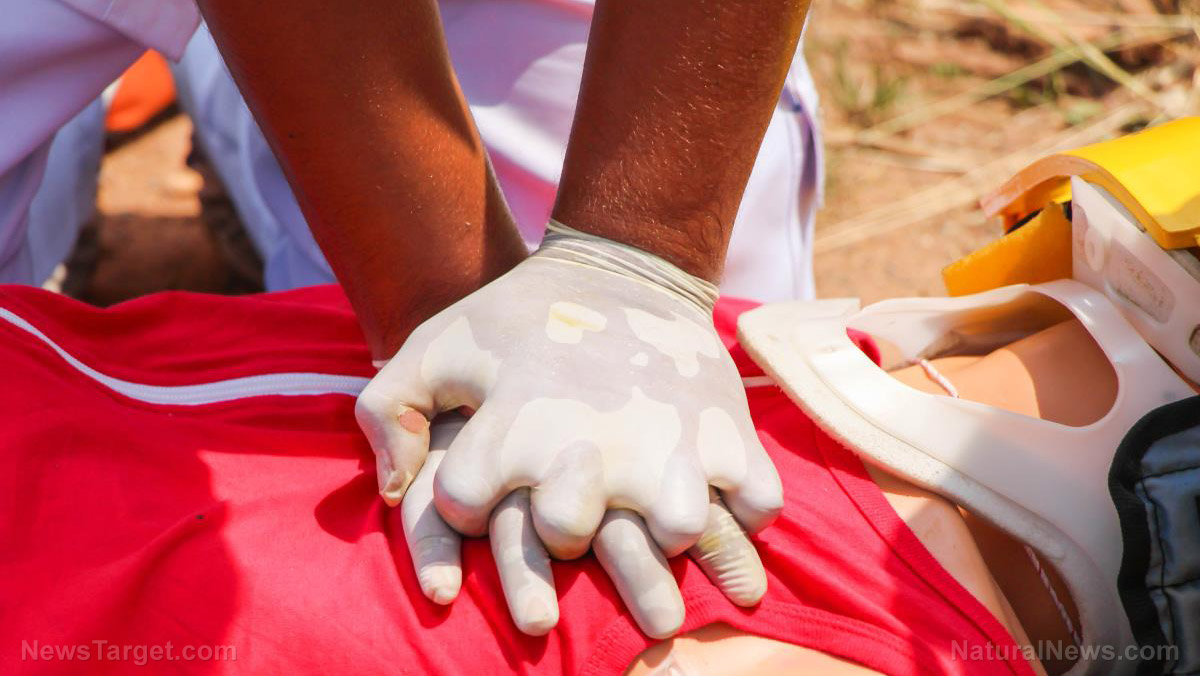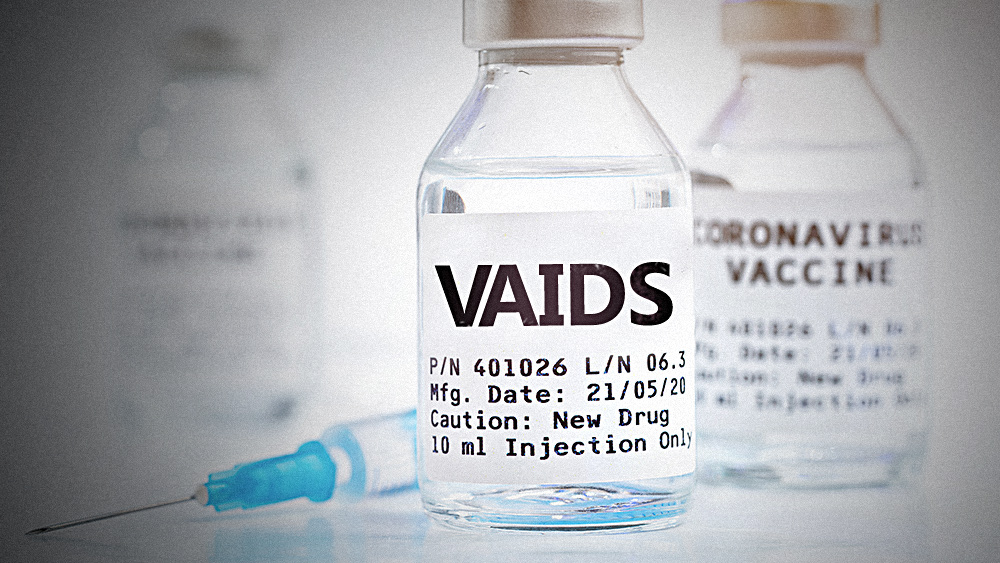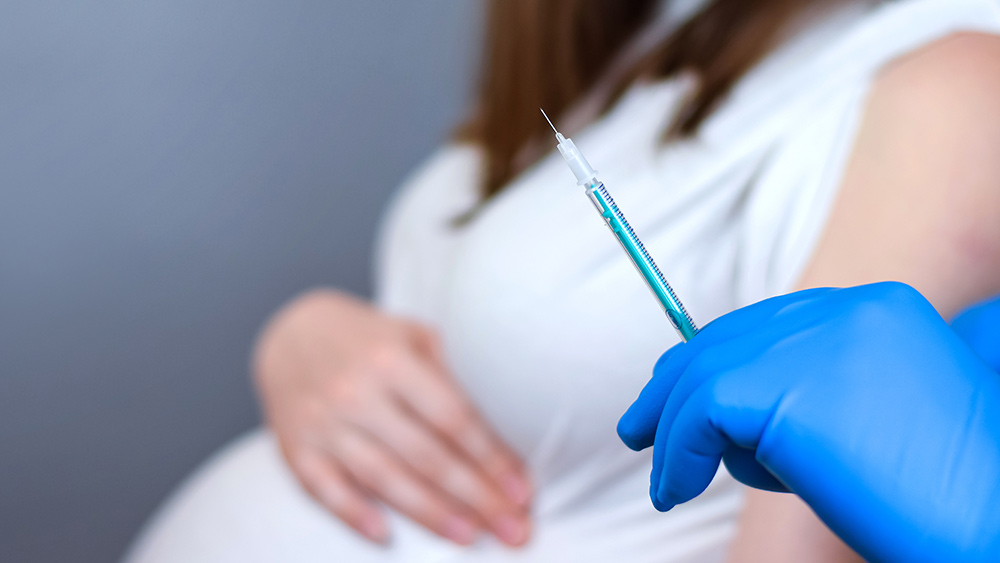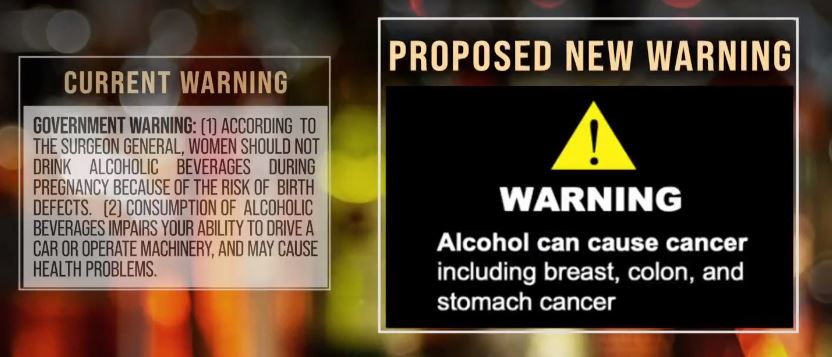WSJ latest to suggest COVID vaccines may be fueling new variants
01/05/2023 / By News Editors

As scientists and mainstream media sounded the alarm this week about a new COVID-19 variant sweeping through the Northeast, the author of an op-ed in the Wall Street Journal (WSJ) suggested COVID-19 vaccines could be fueling new variants.
(Article republished from ChildrensHealthDefense.org)
In her Jan. 1 opinion piece, Allysia Finley — a member of WSJ’s editorial board — cited new research suggesting the virus appears to be evolving in ways that “evade immunity.”
Finley also pointed to research showing people who received COVID-19 boosters are more susceptible to infection than people who received the primary series but were not boosted.
Meanwhile, public health officials and scientists continue to call for global mass vaccination against COVID-19.
Since the COVID-19 Omicron variant emerged in November 2021, its descendants have been predominant. The latest Omicron variant, XBB.1.5, evolved from the XBB variant — itself a fusion of two Omicron subvariants — found in at least 70 countries.
There is no evidence that XBB is more lethal than other Omicron subvariants, but several recent studies indicated it is more transmissible and evades protection offered by existing vaccines and monoclonal antibody treatments.
XBB.1.5 has a key mutation known as F486P, which according to the Bloom Lab, is tied to immunity escape because it changes the part of the virus targeted by antibodies from vaccination or previous infection. The predecessor XBB strain had the same ability to evade antibodies.
The new mutation in XBB.1.5 also allows the virus to bind more tightly to human cells through the ACE2 receptor — the doors the virus uses to enter human cells — making it more transmissible.
The XBB.1.5 subvariant, first detected in New York and Connecticut in late October, appears to have developed in the U.S.
The Centers for Disease Control and Prevention (CDC) estimated that XBB.1.5 nearly doubled in proportion to other variants each week in December. It now accounts for about 40% of new COVID-19 infections in the U.S. and 75% of new infections in the Northeast according to the CDC’s COVID Data Tracker.
WSJ asks: Are vaccines fueling new COVID variants?
In her op-ed, Finley outlined several recent studies on how the COVID-19 virus evolves to evade immunity, leading her to ask if the vaccines are responsible for the evolution of new variants.
Finley cited a study published in Nature in December showing the evolution of Omicron has led to the rapid, simultaneous emergence of many variants that are more transmissible and more likely than the previous subvariants to evade antibodies produced by vaccines and monoclonal antibody treatments.
The study hypothesized that immune imprinting — which occurs when initial exposure to a vaccine or virus limits a person’s future immune response against variants of that virus — may be driving viral evolution.
The first COVID-19 vaccines focused the immune system response on the ancestral spike protein. The bivalent vaccines that target the ancestral and the Omicron BA.5 spike proteins prompt the immune system to produce antibodies that target the viral regions the two strains have in common.
According to the study, the new XBB subvariants evolved to elude the antibodies induced by the original and bivalent vaccines and breakthrough infections. The researchers concluded that “current herd immunity and BA.5 vaccine boosters may not efficiently prevent the infection of Omicron convergent variants.”
Finley also cited a study published last month in The New England Journal of Medicine that also provided evidence of vulnerability from immune imprinting. The researchers investigated neutralizing antibody responses against Omicron variants, including XBB, among people with monovalent and bivalent boosters.
Neutralizing antibodies among all research subjects were lowest against the XBB subvariant. The neutralizing antibodies of those who had received the bivalent booster showed some neutralization against Omicron subvariants, but they were 26 times as high against the original ancestral variant as they were against XBB and 4 times as high against XBB as they were against the BA.5 Omicron variant.
Another study forthcoming in Cell found that recent BQ and XBB subvariants demonstrated a dramatically increased ability to evade neutralizing antibodies, including among recipients of the bivalent vaccine and immunized people who had a breakthrough Omicron infection.
The study also found that these new subvariants are resistant to monoclonal antibody treatment.
WSJ not the first to suggest vaccines could fuel new variants
In August 2021, when vaccine expert Geert Vanden Bossche, D.M.V, Ph.D., independent virologist and vaccine expert, warned that vaccines could lead to new, more infectious viral variants becoming increasingly dominant, he was attacked and accused of spreading misinformation.
In his widely circulated article, Vanden Bossche argued universal mass vaccination would prompt dominant propagation of highly infectious, neutralization escape mutants, and naturally acquired — or vaccinal neutralizing antibodies — would no longer offer any protection to immunized individuals.
“Every further increase in vaccine coverage rates will further contribute to forcing the virus into resistance to neutralizing, S-specific Abs [antibodies]. Increased viral infectivity, combined with evasion from antiviral immunity, will inevitably result in an additional toll taken on human health and human lives.”
Vanden Bossche’s hypothesis has since been partially supported by studies such as those cited by the WSJ and by other research published in 2021 in Scientific Reports, suggesting vaccinated people may play a key role in helping SARS-CoV-2 variants evolve into those that evade existing COVID-19 vaccines.
In an interview last year with Robert F. Kennedy, Jr., on “RFK Jr. The Defender Podcast,” Vanden Bossche said:
“If you cannot stop the infection of the virus and the transmission of the virus, all you will do is give variants that are able to overcome this immune pressure — you will give them a competitive advantage.
“And as the transmission continues, these variants will just be enriched in the population, up until the point where they become dominant.”
Kennedy, Children’s Health Defense chairman and chief litigation counsel, responded:
“What we’re doing is we’re creating a reservoir that is constantly producing what we call escape variants.
“In other words, variants that are designed under evolutionary pressure. They’re being selectively bred to escape the impacts of the vaccine, and each one now will become dominant in the population.”
Despite this danger, Vanden Bossche said he was guardedly optimistic as he sees natural immunity succeeding against the new viral strains, despite the ineffectiveness of the vaccines.
“The population is now regaining the functionality of its innate immune system — that we know is protective against coronavirus,” he said.
New studies suggest vaccinated and boosted may be more susceptible to infection
Several new studies also indicate that people who have been vaccinated and boosted may be more likely to be infected with COVID-19 than their unvaccinated counterparts.
A Cleveland Clinic preprint study, also cited in the WSJ op-ed, studied approximately 50,000 healthcare workers in the Cleveland Clinic healthcare system to evaluate the efficacy of the bivalent boosters.
The study found the bivalent boosters offered moderate (30%) protection against infection while the BA.5 variant was spreading.
It also found that workers who received more doses of the vaccines were at higher risk of getting sick: Those who received three doses were 3.4 times as likely to get infected as the unvaccinated and those who received two doses were 2.6 times as likely to get infected.
“This is not the only study to find a possible association with more prior vaccine doses and higher risk of COVID-19,” the authors noted, citing other studies with similar findings.
“We still have a lot to learn about protection from COVID-19 vaccination, and in addition to a vaccine’s effectiveness it is important to examine whether multiple vaccine doses given over time may not be having the beneficial effect that is generally assumed.”
Former New York Times reporter Alex Berenson reported on another study published Dec. 14, 2022, in the American Journal of Public Health that compared vaccinated people with those who had been previously infected in 2021 and early 2022.
Using a database from the state of Indiana, the authors found that people who had been vaccinated against COVID-19 were more than twice as likely to be infected as those who had a previous COVID-19 infection. The researchers found about 1 in 15 vaccinated people was infected, compared to 1 in 33 people who had a previous infection.
“The study’s results are worse than they first look, because the researchers started counting 30 days after a vaccine recipient received the first dose,” Berenson wrote, “thus excluding the period immediately after the first dose in which many newly vaccinated people become infected.”
An investigation by The Epoch Times found that in many states, people in the U.S. who received COVID-19 boosters are more likely than those who received only a primary series to get infected, receive hospital care and die.
The Epoch Times reviewed publicly available data and public records requests from 2022 for 19 states. The major limitation of the study, The Epoch Times acknowledged, was that the data was not adjusted for age and other important variables, which could bias the findings.
Despite that limitation, “It is unassailable that a very large fraction of highly inoculated [people] are among those being hospitalized or dying,” Dr. Robert Malone, inventor of the mRNA vaccine, told The Epoch Times.
“So, at a minimum, the effectiveness in preventing hospitalization or death does not appear to be aligned with the official policy position.”
XBB.1.5 variant not likely to drive new wave of infections
Despite XBB.1.5’s growth in proportion, experts say any overall increase in COVID-19 cases may just be attributable to seasonal fluctuation and it remains uncertain, or unlikely, that XBB.1.5 will drive a new wave.
Whether the new subvariant “will lead to a surge in the absolute number of cases is still not certain,” cautioned Jesse Bloom, Ph.D., an evolutionary biologist at Fred Hutchinson Cancer Center, in a Twitter thread explaining the new variant.
“In general human coronaviruses (and other respiratory viruses) surge in winter,” he added.
Andrew Pekosz, a professor at Johns Hopkins Bloomberg School of Public Health who studies viral replication, told CNN, “Most public health officials would have expected an increase in Covid-19 cases, even before we knew about XBB.1.5.”
“So whether the increases in Covid cases that are occurring during the holidays are occurring because of the social interactions that people have had or whether they’re specifically related to XBB.1.5 is still something that isn’t clear. Both of those things are probably contributing,” he added.
Ravi Gupta, professor of clinical microbiology at the University of Cambridge told The Guardian, “It [XBB.1.5] might drive an increase in cases, but I’m not convinced this will necessarily cause an explosive wave of infections.”
“I don’t think there’s any cause to panic,” Gupta added. “The main thing we worry about is the severity of the disease, and there is no evidence that it’s more severe.”
Read more at: ChildrensHealthDefense.org
Submit a correction >>
Tagged Under:
Big Pharma, biological weapon, bivalent boosters, covid-19, health science, immune system, infections, outbreak, pandemic, pharmaceutical fraud, real investigations, spike protein, vaccine damage, vaccine injury, vaccines, WSJ
This article may contain statements that reflect the opinion of the author
RECENT NEWS & ARTICLES
COPYRIGHT © 2017 VACCINE INJURY NEWS COM



















